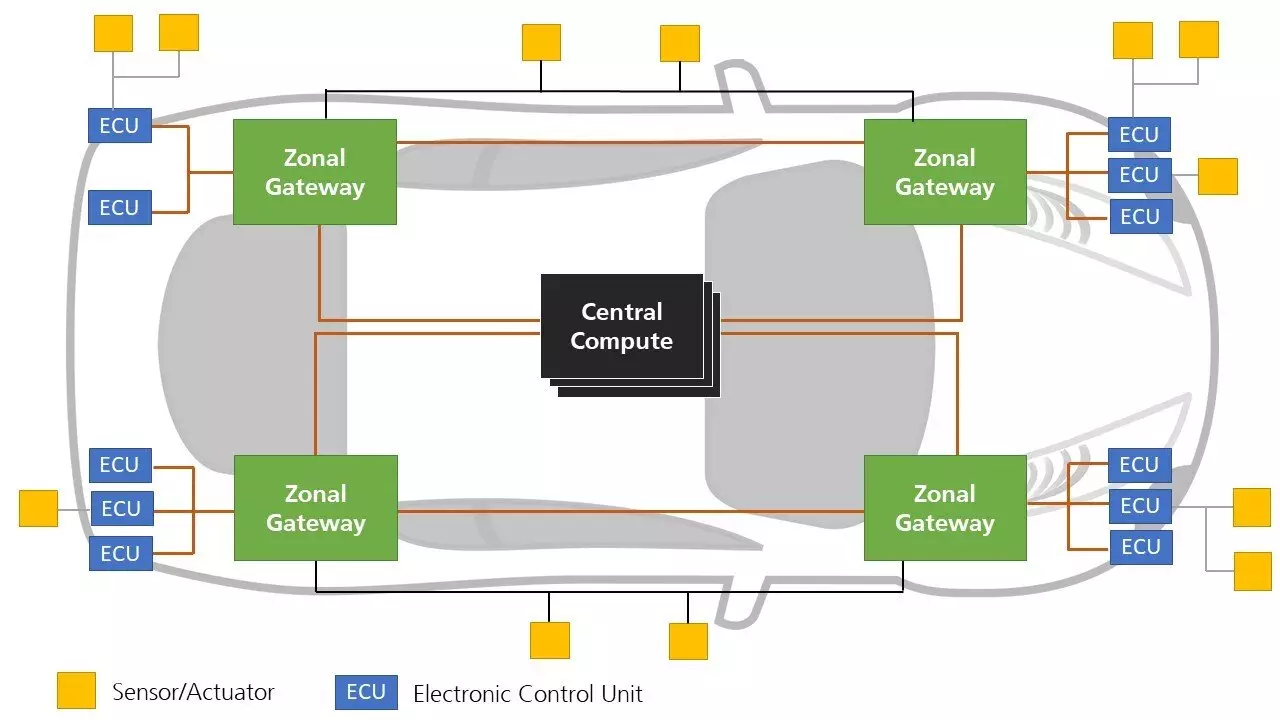As technology continues to advance rapidly, the automotive industry is faced with the challenge of integrating more electronics into modern cars. With the increasing complexity of managing various computers and assistance systems, there is a need for a more efficient and centralized approach to design and architecture. In a joint research project called CeCaS, Fraunhofer researchers are working on implementing a systems architecture that revolves around managing electronic components from a central supercomputing platform.
The core idea behind the Fraunhofer technology is to create a highly reliable Ethernet backbone that operates in real-time. This innovative approach envisions a future where cars are controlled from a central platform, allowing for seamless updates and integration of new functions. By centralizing the management of components, vehicle manufacturers can streamline the construction of highly automated and connected vehicles.
The Fraunhofer researchers are focusing on time-sensitive networking (TSN) for their project, aiming to enhance Ethernet-based network technology with real-time capabilities. By prioritizing tasks based on the urgency and importance of commands, the CeCaS systems ensure robustness and reliability, even with the vast amount of data generated by vehicles. This technological advancement paves the way for more efficient communication between systems and increased computing power in real-time.
Read More: The Impact of Meta’s Decision to Stop Paying for News Content in Australia
One of the key advantages of Ethernet in this project is its flexibility and scalability. Combined with Fraunhofer’s IP cores, Ethernet technology can be easily adapted for vehicles of different sizes, categories, and functions. The centralized control system not only allows for wireless updates and integration of new functionalities but also results in a narrower cable harness, leading to reduced material costs and overall lighter vehicles.
The computer architecture developed in the CeCaS project signifies a significant departure from traditional construction methods. Moving from domain-based control to zone-based management, high-performance computing platforms can now control multiple modules simultaneously. This shift in design enables the central control of safety-critical systems, as well as various other components such as sensors, motors, entertainment systems, and more.
The future of automotive technology is heading towards revolutionizing car architectures through centralized systems, real-time networking, and innovative design. The collaborative efforts of Fraunhofer researchers and automotive industry partners in the CeCaS project are driving the advancement of vehicle technology to meet the demands of automation and connectivity. By reimagining the way electronic components are managed in cars, the industry is poised for a new era of highly advanced and efficient vehicles.


Leave a Reply